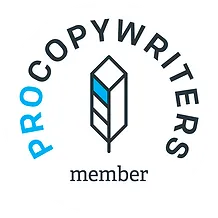I don’t know you. I don’t know your website. But, over the years, I’ve seen the same pitfalls come up time and time again – and applied the same quick fixes to make them better.
Yes, a website that performs is the combination of a huge number of different things. The right user experience. The right tone of voice. The right messaging underneath it all, based on a deep, true understanding of what your audience cares about.
But all of that is pointless if the execution holds you back.
So, if you’re reviewing your website and wondering what’s wrong, here are five prime suspects to get you started – not hard-and-fast rules, but things to consider.
1. Remove functional headlines
Your headline is prime real estate. It’s the first thing people are drawn to. And, as they scroll up and down the page, could well be the only thing they bother to read.
Don’t waste them on telling people what you’re about to tell them.
Functional headlines are the ones like ‘Our Story’ or ‘What we do’. They’re there to serve an important navigational purpose and help people find their way down the page – but it’s 2020. People know how to use a web page. So I would always prioritise telling a complete, cohesive, benefit-driven story.
As an alternative, eyebrow copy (a small headline that appears above your main one) can be a great way to include these functional waypoints while giving you more freedom to make your headlines emotive.
2. Benefits first
Problem, Agitation, Solution is a classic copywriting formula that works wonders in direct mail and email. But less so on a web page.
It’s common for a website to take a chronological approach to the story it’s trying to tell. ‘If you’ve got this problem, this will help you’. But nobody wants to read a list of their own pain points before getting to the good stuff.
Websites are thinking like a fairy tale when they have the freedom to think like Pulp Fiction.
By taking a non-linear approach, you can start with the elevator pitch and big benefits, then cover those pain points further down the page. It’s the best of both worlds — the people who just want quick answers get them sooner, and anyone who needs more encouragement gets it at the appropriate time.
3. Make it interactive
What sets the web apart is that it’s interactive. Duh.
But that doesn’t have to mean an all-singing, all-dancing application that lets people create an account, add their friends, or post what they’ve been doing over the weekend. It just means you can click stuff. And people sometimes forget that.
One of the web’s unique strengths is your ability to show people just a bit of your product or service, and give them a way to demonstrate their desire to learn more (by clicking something). So avoid that temptation to put everything on a single, seemingly endless page.
You don’t need to take your prospect from zero to sale in a single page of your website. You just need to give them enough to prompt a next step, whether that’s clicking a button, reading more detail, or getting in touch.
4. Fix your About page
Homepages are super exciting. Product pages are your chance to sell. And that’s why an inward-looking ‘About Us’ page tends to get less attention from copywriters and readers alike.
When I’m working on a website, that’s always the place I’d like to start – precisely because of its unique position on the edge of anyone caring.
Your About page is your opportunity to summarise the very core of who you are, what you stand for, what you do, and why anyone should care. It’s the one place you can write ‘These are our values’ without anyone laughing.
Once it’s right, an About page becomes a single page bible for your brand, tone of voice and messaging – something you can constantly return to when writing new pages. If they don’t line up and reinforce or complement the same few ideas, it’s time for a rewrite.
5. Break it down
I always try to do a final pass on the copy once it’s actually in the design. And if a paragraph stretches over more than three lines, it’s getting changed.
Sometimes, all you need is a line break.
Other times, I’ll take a more radical approach, looking for opportunities to turn body copy into bullets, or break it out into a table with icons.
The visual density of copy is just as important as the copy itself. You can say ‘We make things easy’ as often as you want, but if your copy is long and hard to read, you’re a liar. The experience you want to give your customers needs to start with your website. Done right, it’s an opportunity to build confidence long before you make personal contact.
